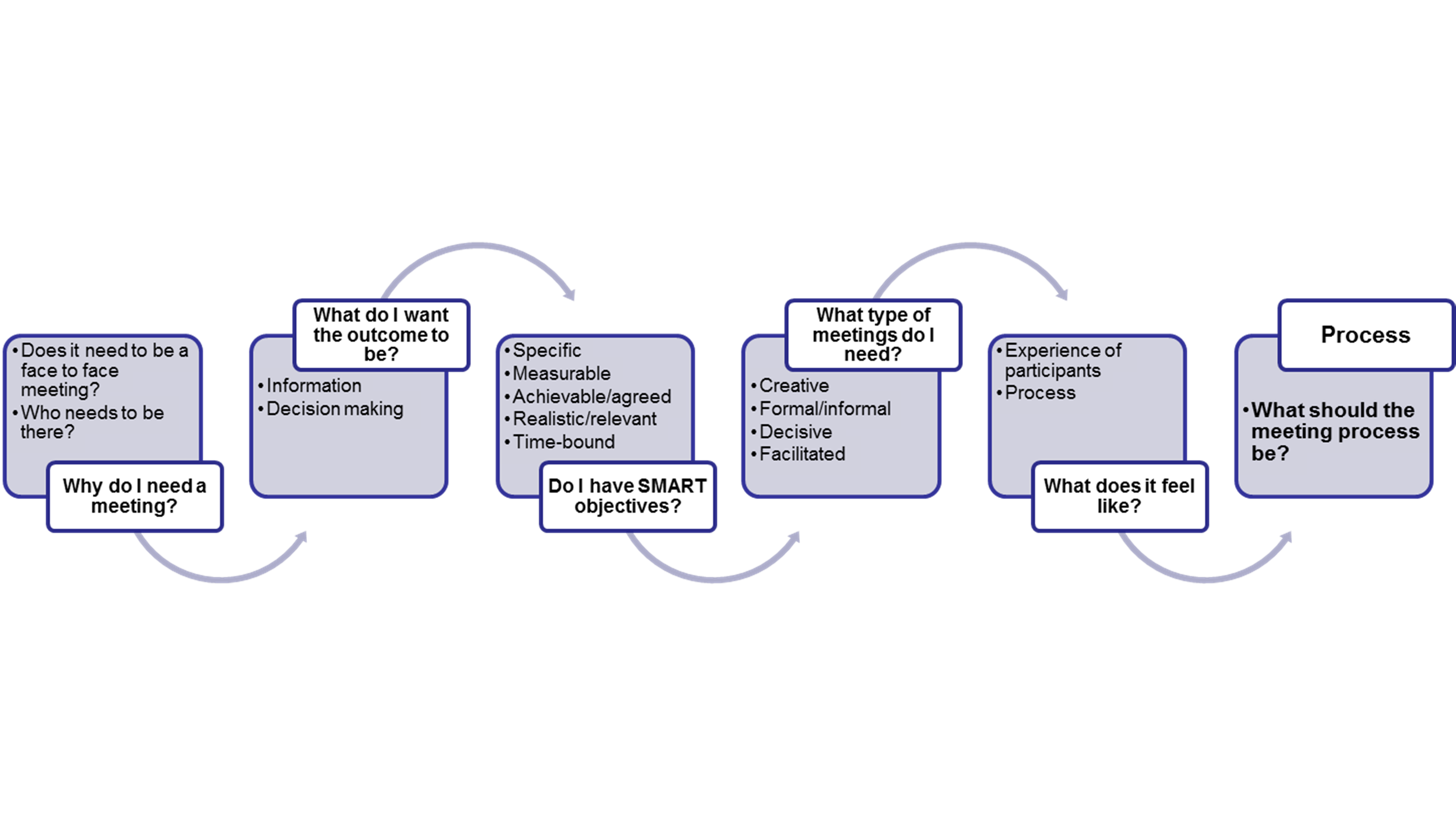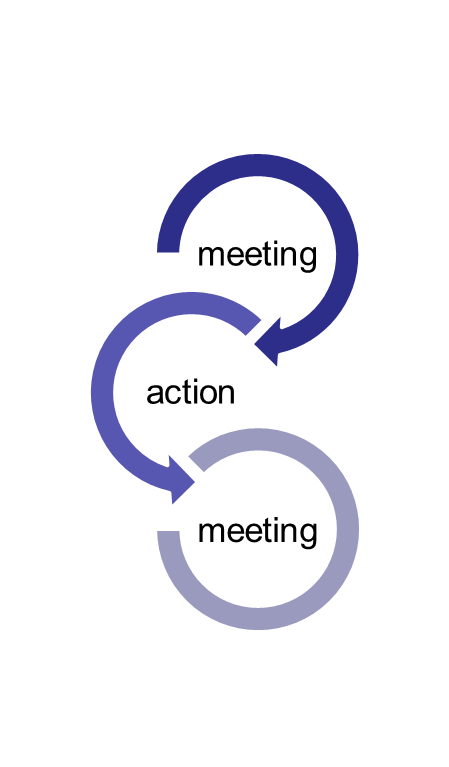Meetings Toolkit
This toolkit provides information and tips that may be helpful when planning and running meetings.
Before getting started, think about whether you really need to have a meeting. The diagram below shows the process of meeting structure and preparation:

Before the meeting
Identify the goals of the meeting
Make sure you have specific goals you would like to achieve in the meeting. If you don’t have specific goals consider alternative ways to do the work, such as:
- email/web and/or phone consultations
- subgroup assignments with reports back to the larger group
Identify the purpose(s) of the meeting:
- working on a common project
- group update
- problem solving
- brainstorming or idea generation
- team building
- making decisions
The diagram below shows how you might think about the type of meeting you need to have: 
Prepare and distribute an agenda
- list topics that will be covered during the meeting and the purpose for each e.g.:
- information distribution
- decision making
- discussion and creation of action plans
- decide how much time should be spent on each topic
- note any action items that are due and make sure team members know of any assignments they are to complete
- distribute the agenda before the meeting
All meetings should have an agenda. This agenda template is helpful to create a successful meeting agenda. The completed agenda would be shared with all participants in advance of the meeting so they are clear on the purpose and expected outcomes. The latter half of the template allows participants to record key agreements and action steps.
At the meeting
Facilitating the meeting:
At the beginning of the meeting process
Set Ground Rules: these are the operating principles for how groups will work together. Meetings are most effective when participants share expectations, respect each other and hold each other accountable. You can use these meeting norms as a starting point and then adapt them to suit you. Take time at the beginning of the process to agree on:
Logistics
- establish a regular, reliable schedule
- agree that meetings will start and end on time; discuss options for dealing with absences
- plan a process for distributing agendas before the meeting and notes afterwards
- establish standards for respectful listening, such as one person speaking at a time, avoiding sarcasm, etc.
- set expectations for confidentiality
- develop a decision-making process
- decide how decisions will be communicated, and to whom
- discuss ways to solicit opinions from the quieter team members
Process
- establish standards for respectful listening, such as one person speaking at a time, avoiding sarcasm, etc.
- set expectations for confidentiality
- develop a decision-making process
- decide how decisions will be communicated, and to whom
- discuss ways to solicit opinions from the quieter team members
At the beginning of each meeting:
- start on time
- discuss the purpose of the meeting and outcomes expected
- review the agenda, time frame and format for meeting
- have individuals introduce themselves
- develop or review ground rules; revise if necessary
During the meeting:
- keep the group on track and on time
- encourage participation and protect minority opinions
- demonstrate respectful behaviour
- confirm group’s decisions or agreements
- respectfully enforce ground rules
- provide breaks or activities when needed
At the end of the meeting:
- clarify next steps
- confirm action items, person responsible and due dates
- set next meeting
- evaluate the meeting process (what worked well, what to do differently)
- thank the group
- end on time
After the meeting
Follow up after the meeting
- engage in follow up - face to face/email/telephone/internet/intranet
- distribute minutes of meeting soon afterwards including action items and responsibilities
- check in with those responsible for action items to keep the process moving

Resources
A guide to hybrid meetings
Books
- Making Meetings Work, Julie-Ann Amos, How To Books, 2000
- Taking Effective Minutes of Meetings, Joanna Gutmann, Kogan Page, 2010
You can borrow these books by emailing org-dev@glasgow.ac.uk

